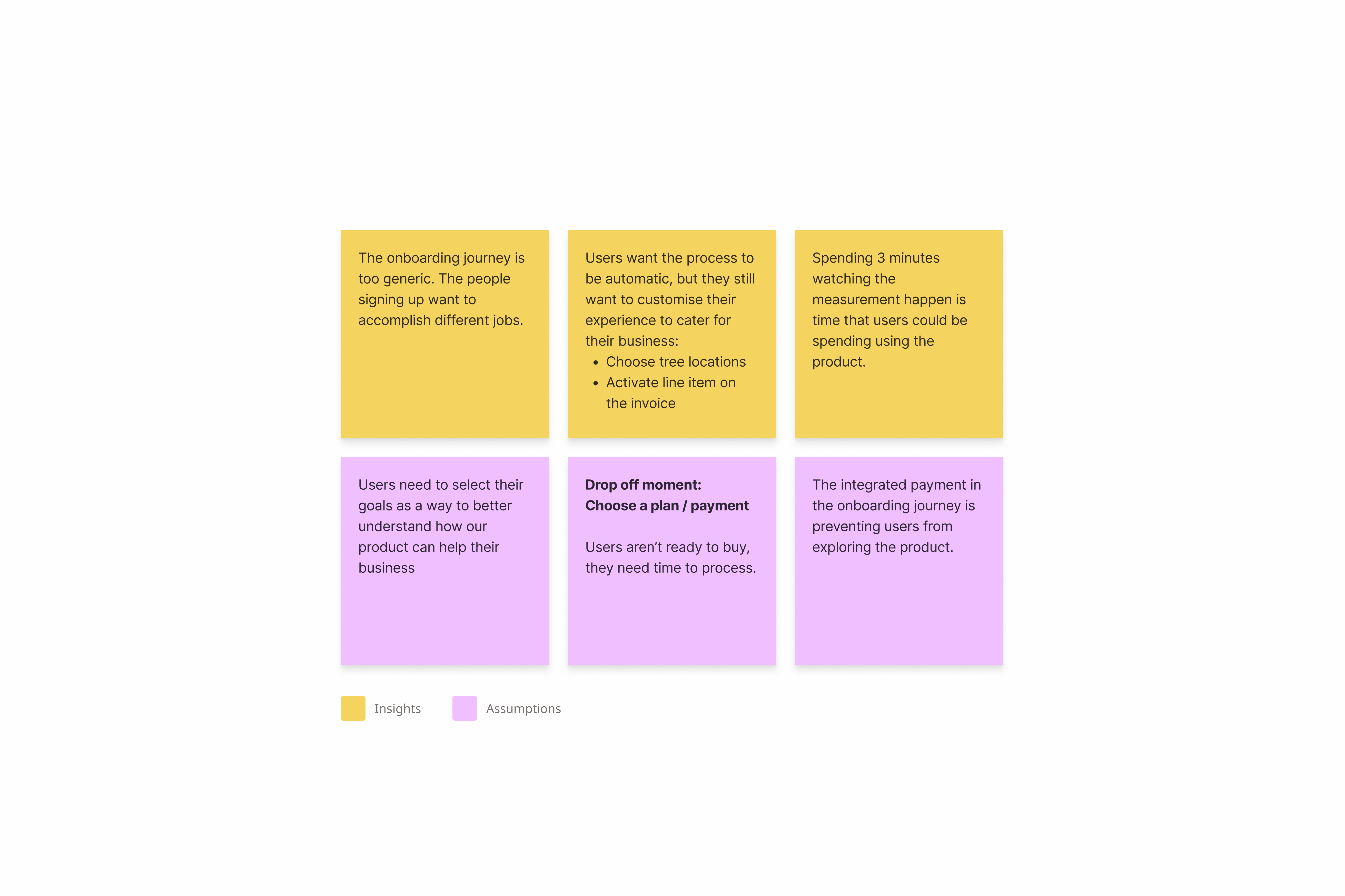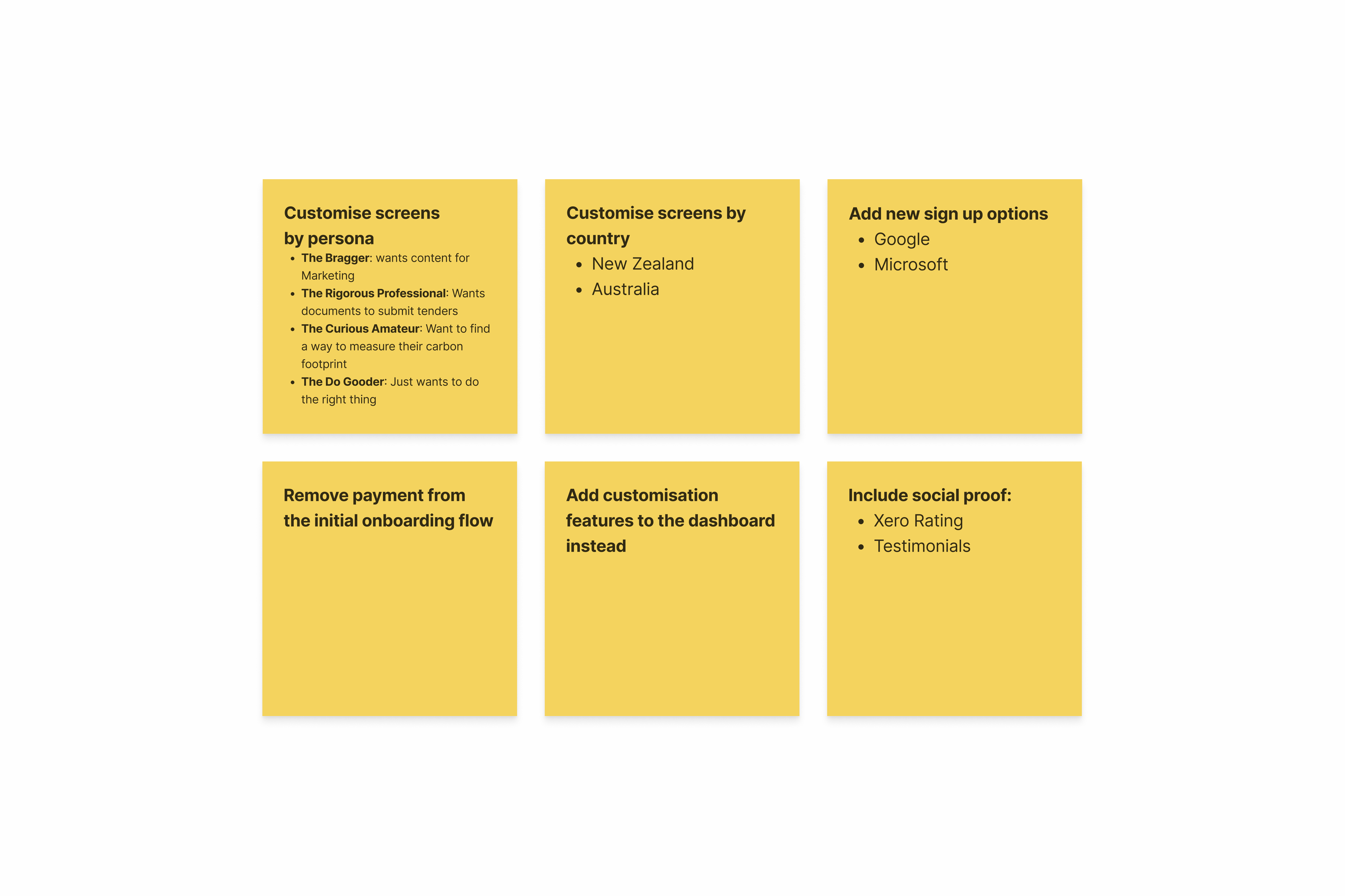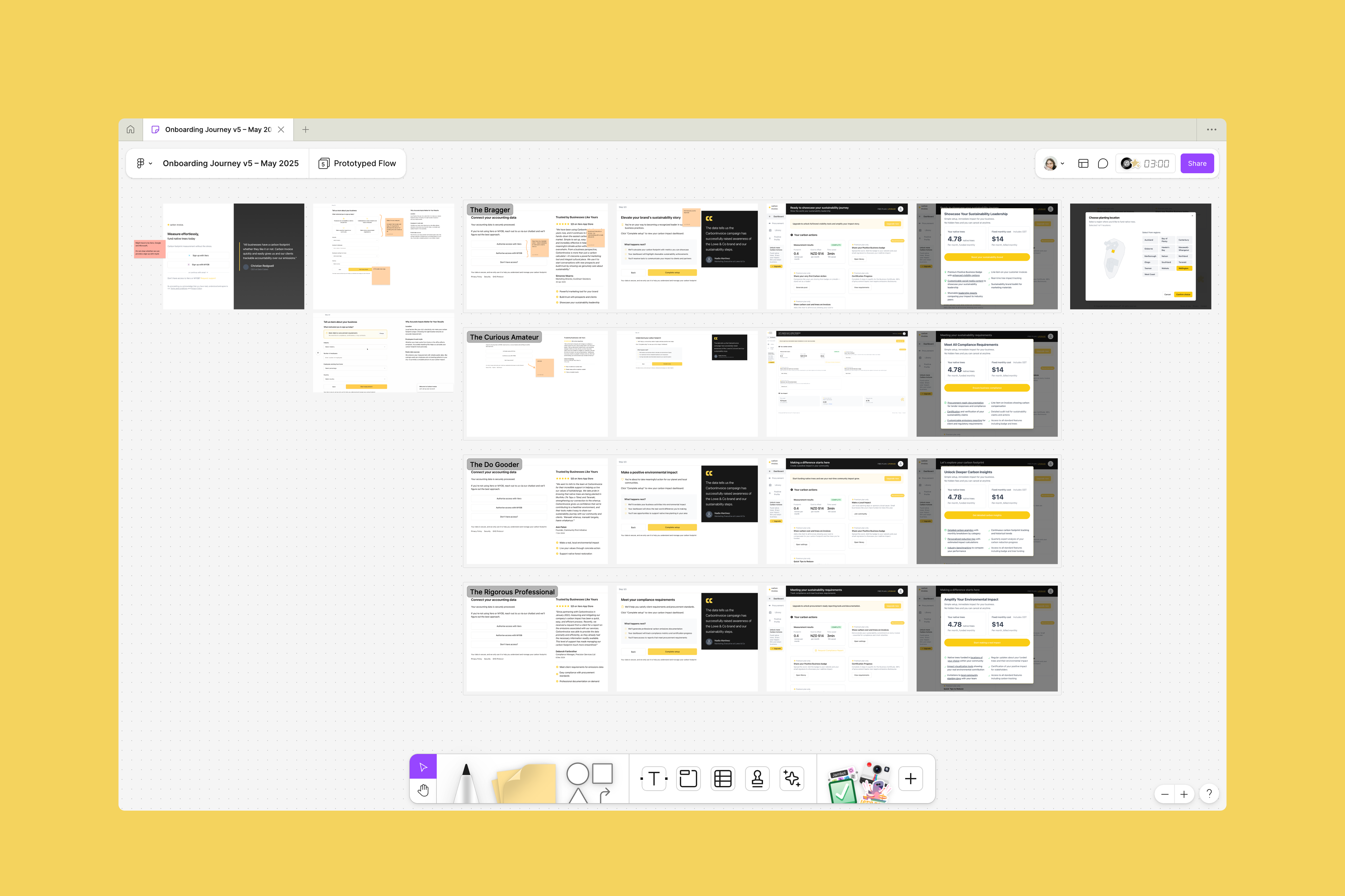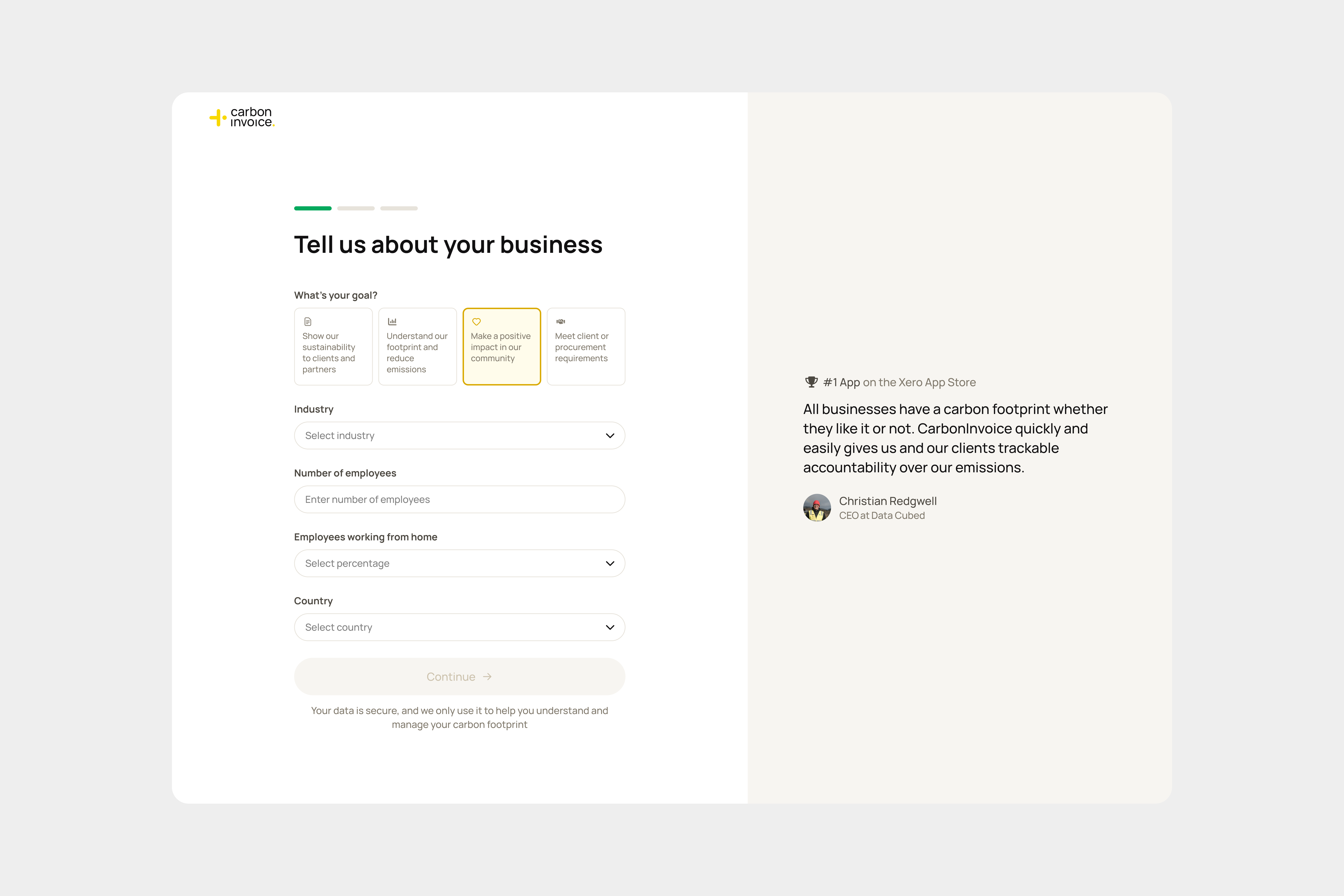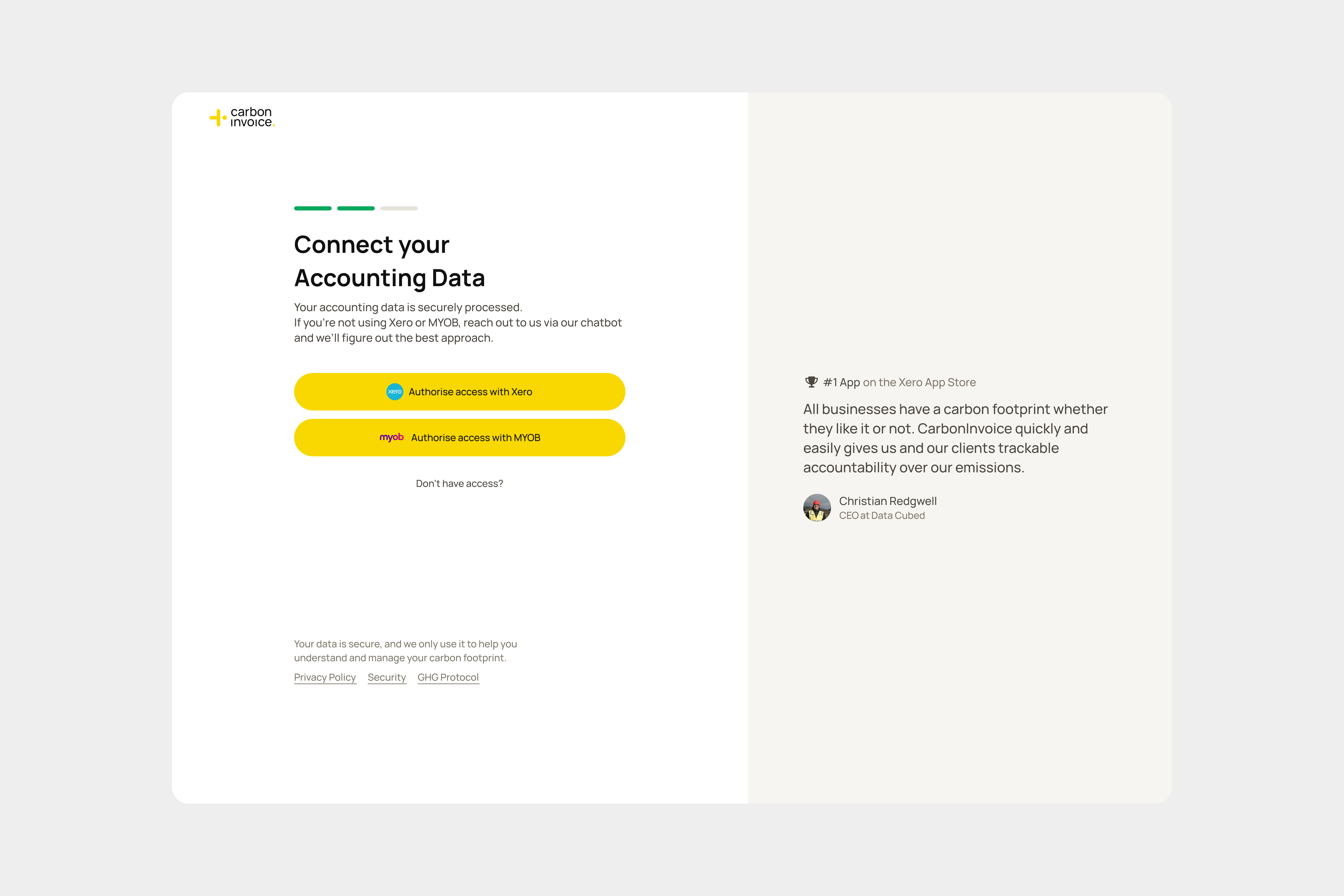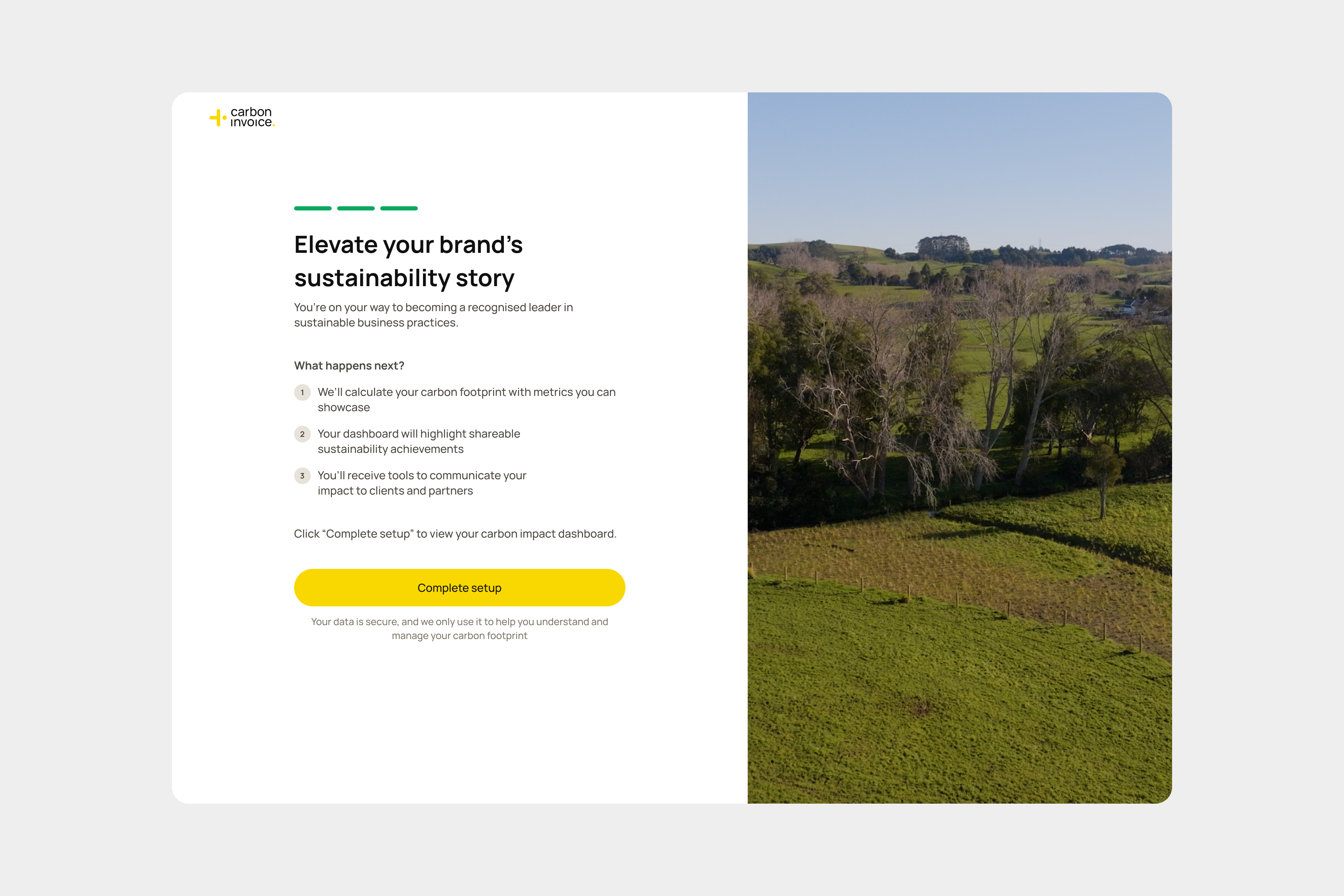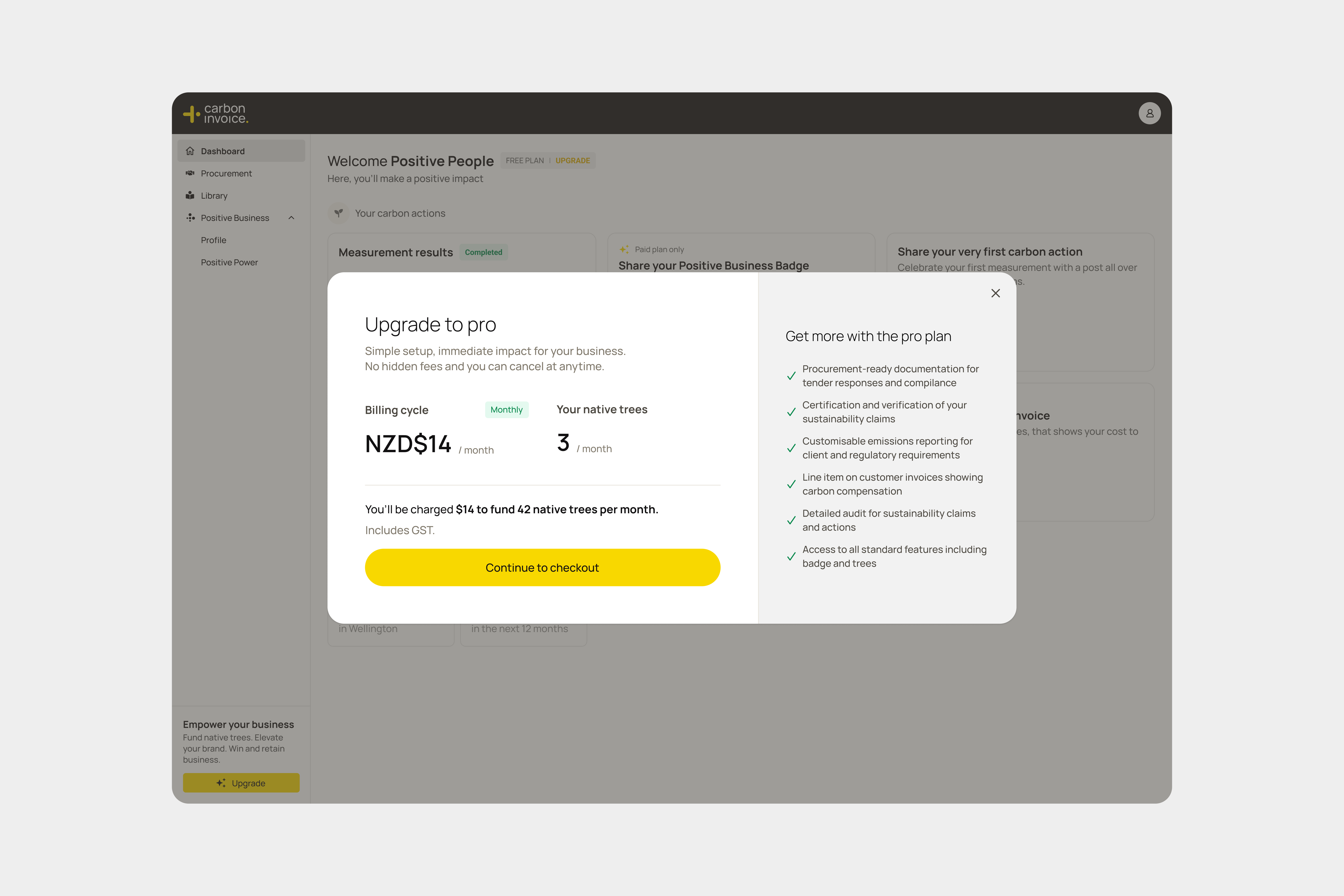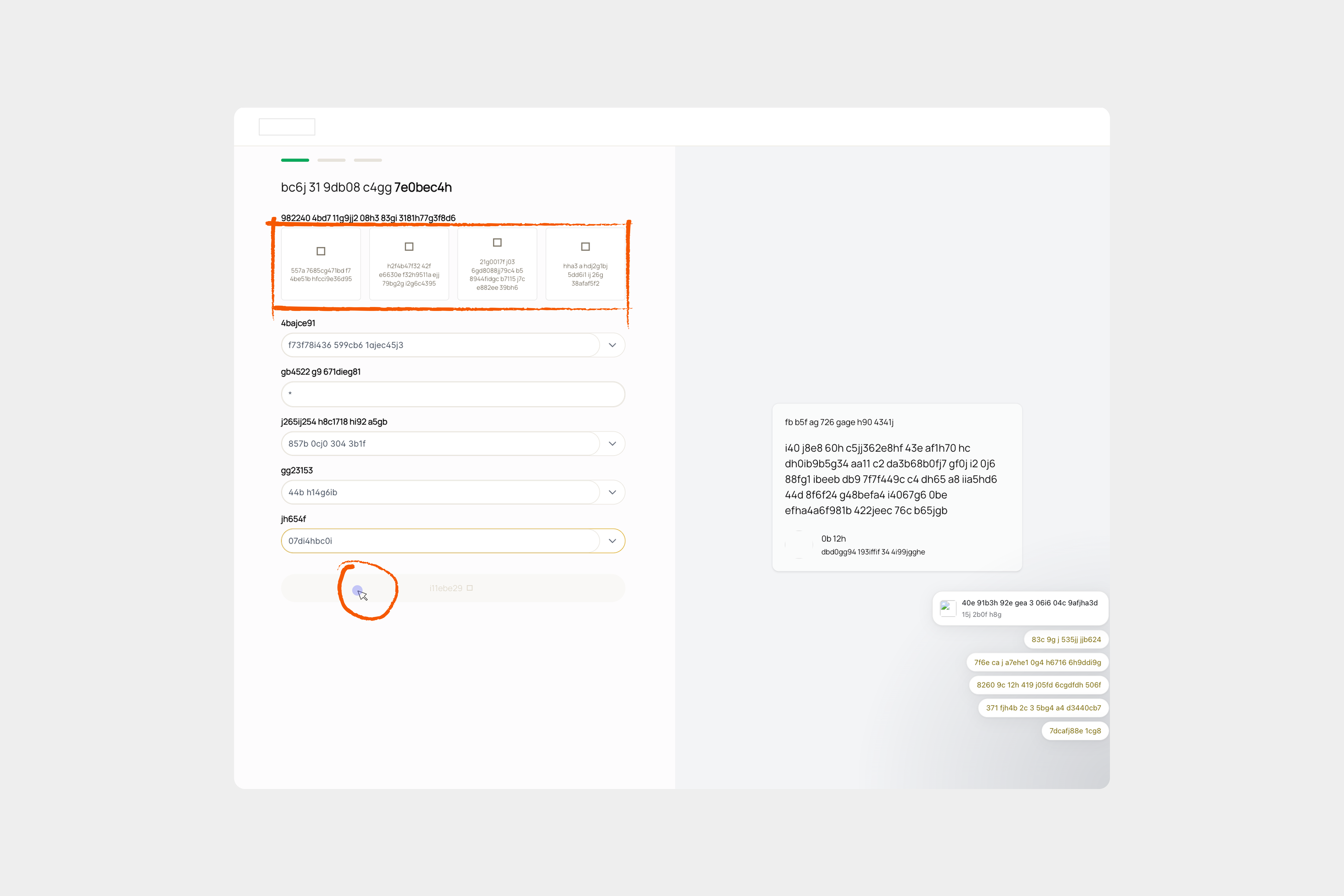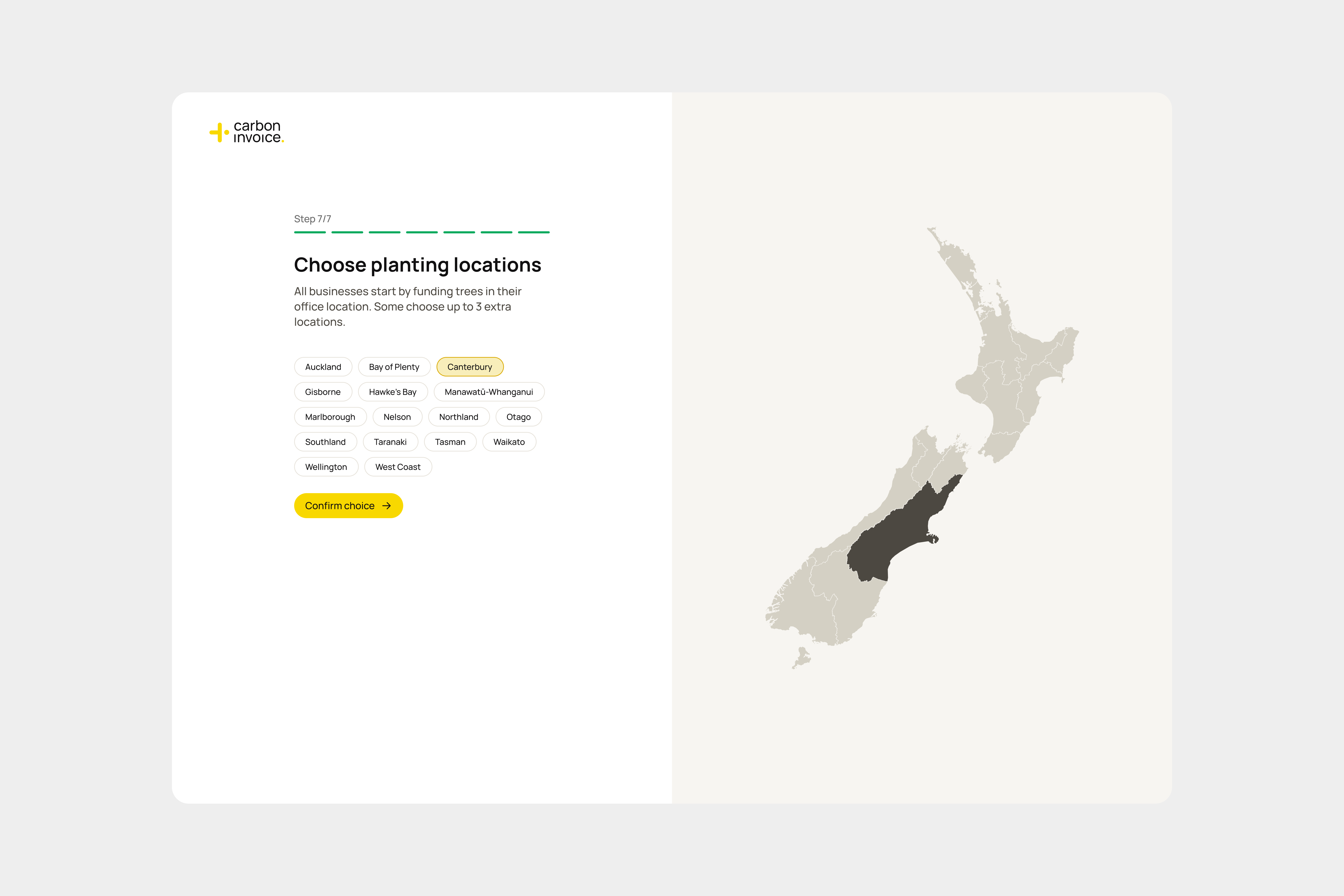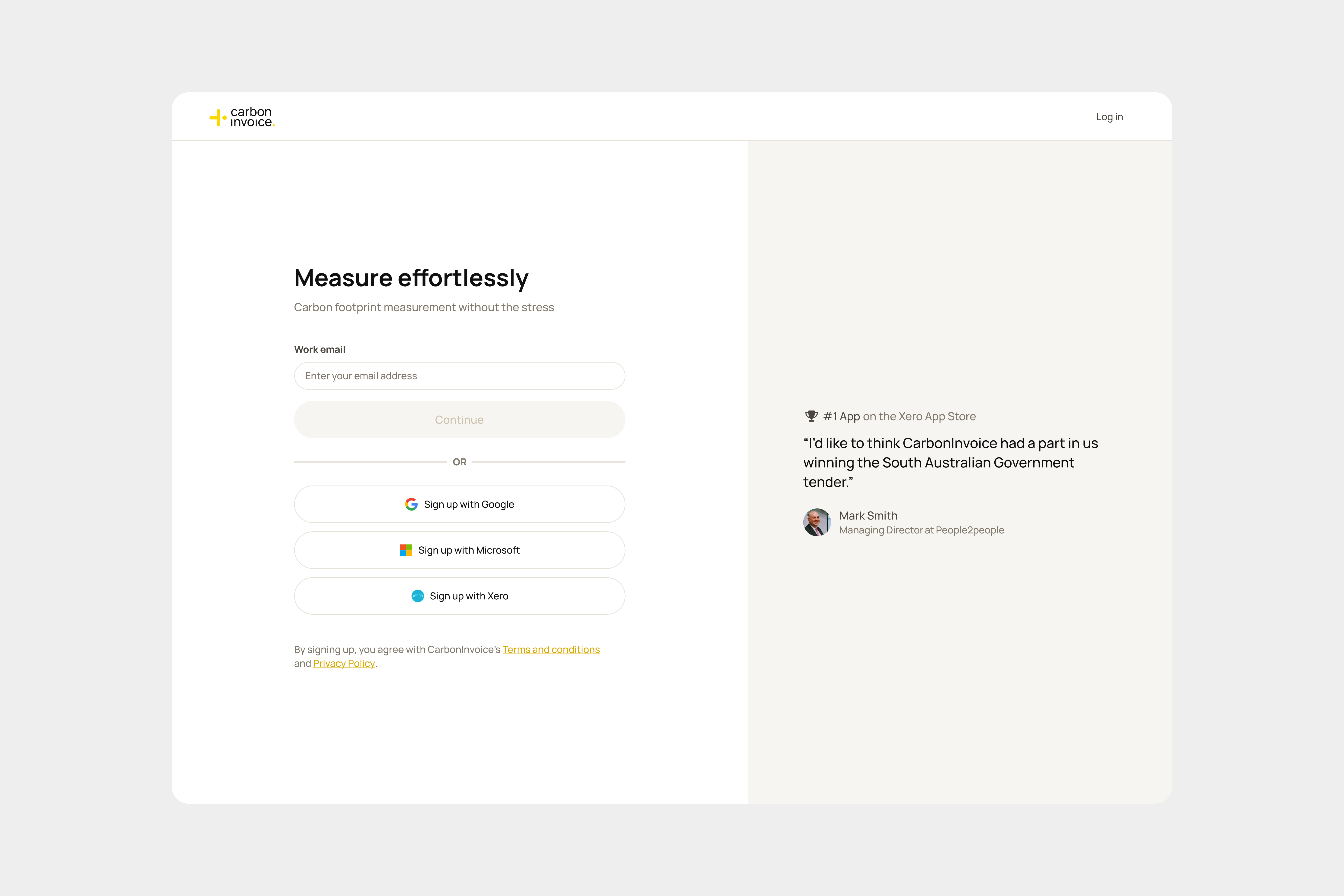
CarbonInvoice
Onboarding Journey: Measurement
To improve the onboarding journey to CarbonInvoice's product, we took an AI-first approach to designing the experience.
Apart from providing an easy way for businesses to measure their carbon footprint. Traditional methods are very labours, so we have the opportunity to provide users with a simple and seamless experience.
Problem
Users keep dropping off the onboarding journey when it’s time to connect the their accounting data and after the measurement is finished, which leads to lower conversion rates.
Solution
Reduce the amount of steps during the onboarding experience, ensure users' data is secure and allow users to enter the product much earlier in the experience
Discovery
results & insights
With this discovery I was aiming to understand why users drop-off at certain points and identify improvements for a better prospect experience.
01
Setting expectations sets users up for success
Be clear on whether users are going to have a 3 minute or a 24h measurement.
02
“Save results” concept sat well with users
Users appreciated being able to save their measurement results so that they can review them at any point.
03
More detailed measurement results
Carbon curious users want a more detailed breakdown of their results.
04
Drop-off moment before connecting accounting data is due to personal reasons
Some users are embarrassed to share their finances, or need permission to connect, hence the drop-off point here.
User flow
Based on the discovery results, I built a 4-step onboarding journey.
Step 1: Provide business details
Step 2: Connect accounting data
Step 3: Carbon measurement
Step 4: Save results & go to dashboard
The most important change here as removing the payment step. Unfortunantely, after designing the flow the project was deprioritised due no dev power on the team at the time.
Continuous discovery
& insights
Even though this project was deprioritised, we never stopped monitoring its performance. Thanks to this, we gathered some interesting insights, which led to us forming our own assumptions. We picked the project back up when a Growth Hacker/Developer temporarily joined the team.
Project requirements
As a team, we got together and prioritised only a handful of requirements that could be easily accomplished.
Updated user flow
The measurement journey was condensed into
3 simple steps after the account is created:
Step 1: Provide business details
Step 2: Connect accounting data
Step 3: Go to dashboard to view results
Users no longer have to watch the 3 minute measurement, then just explore the product.
Design & AI-first
development
The Growth Hacker took an AI first approach to developing the updated measurement flow that we agreed on. He developed the entire flow even before I began designing the UI.
Given that the new flow was developed not using the right styles, I jumped in to design the interface. While I designed the UI, the team kept working on the copy of the screens for each persona.
Final designs:
3-step journey
After creating an account, users go through a 3-step process to connect their accounting data and run the measurement. Biggest changes:
Payment removed;
Waiting for the measurement while on the onboarding flow taken out;
Users can explore the product while they wait for the results.
Final designs:
Experience segmented
based on the persona
During step 2, when users are asked about their goal, their answer determines the copy users read during their experience.
Post-launch:
2 months later
The 3-step onboarding is currently live and being monitored by the team using highlight.io. Here’s what we’ve learned:
Journeys completed: 20
Avg. time spent on flow:
Some potential UI improvements include the goal selector.
Features backlog
We also explored other potential updates, but ended up not moving forward for now. Here are they:

